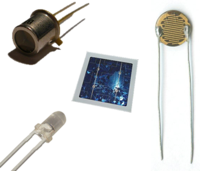
Photo from wikipedia
Abstract Significant energy savings can be achieved by operating heating, ventilation and air conditioning controllers using a feedback from sensor-based occupancy detection methods. This paper presents a novel plug-and-play occupancy… Click to show full abstract
Abstract Significant energy savings can be achieved by operating heating, ventilation and air conditioning controllers using a feedback from sensor-based occupancy detection methods. This paper presents a novel plug-and-play occupancy detection method based on the trajectory of various indoor climate sensor data. Sensor data obtained from two different building zones was used to test the efficacy of the method. For a simple test room, occupancy detection based on CO 2 sensor data had the best performance with a mean absolute error (MAE) of 2%, closely followed by PIR and volatile organic compound (VOC) with a MAE of 3% and 4%, respectively. For a real dorm apartment with three rooms, but only one data logger, the best performance was found when PIR was used to determine when the apartment went from unoccupied to occupied and either VOC or CO 2 sensor data was used to determine when the apartment went from occupied to unoccupied (MAE of 22% and 26%, respectively). Compared to more complex detection methods that require detailed information about the physical conditions of rooms or extensive training data sets, the proposed plug-and-play method that employs simple trajectory of CO 2 , PIR and VOC sensor data resulted in similar occupancy detection accuracies.
Journal Title: Building and Environment
Year Published: 2017
Link to full text (if available)
Share on Social Media: Sign Up to like & get
recommendations!